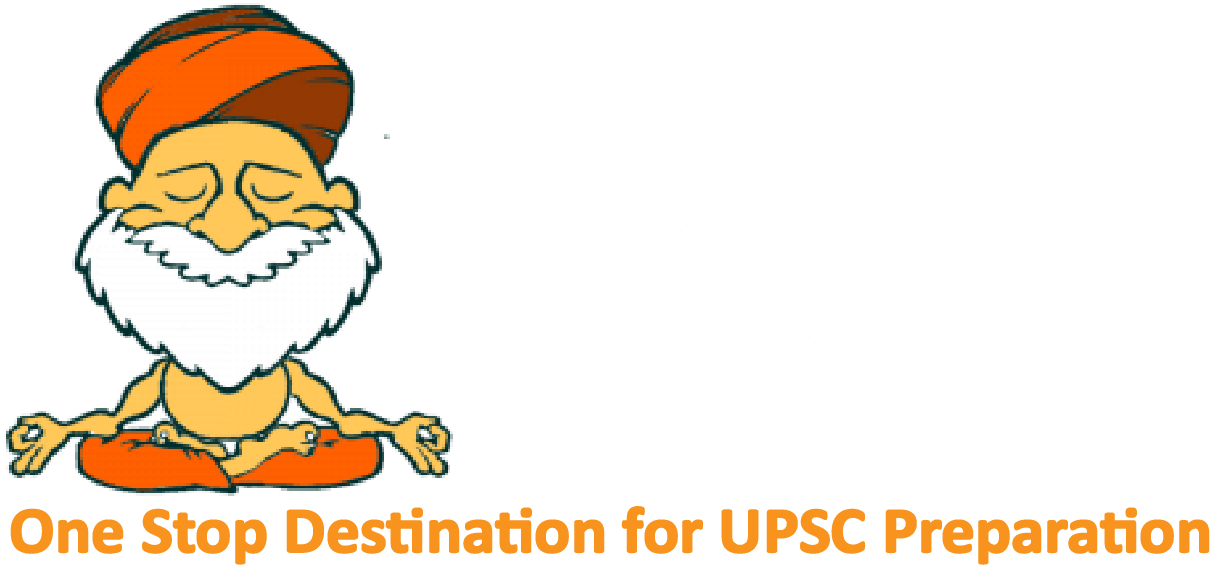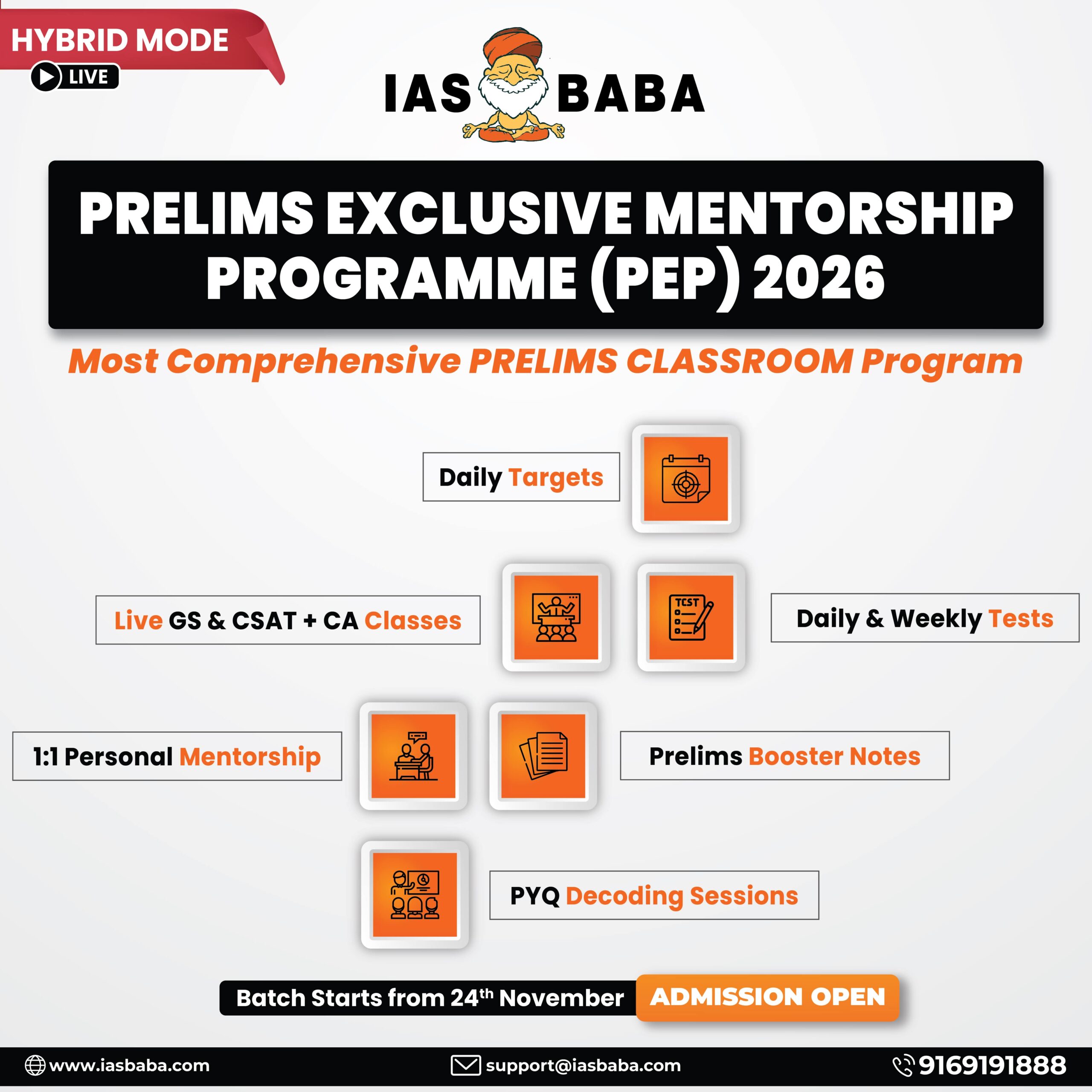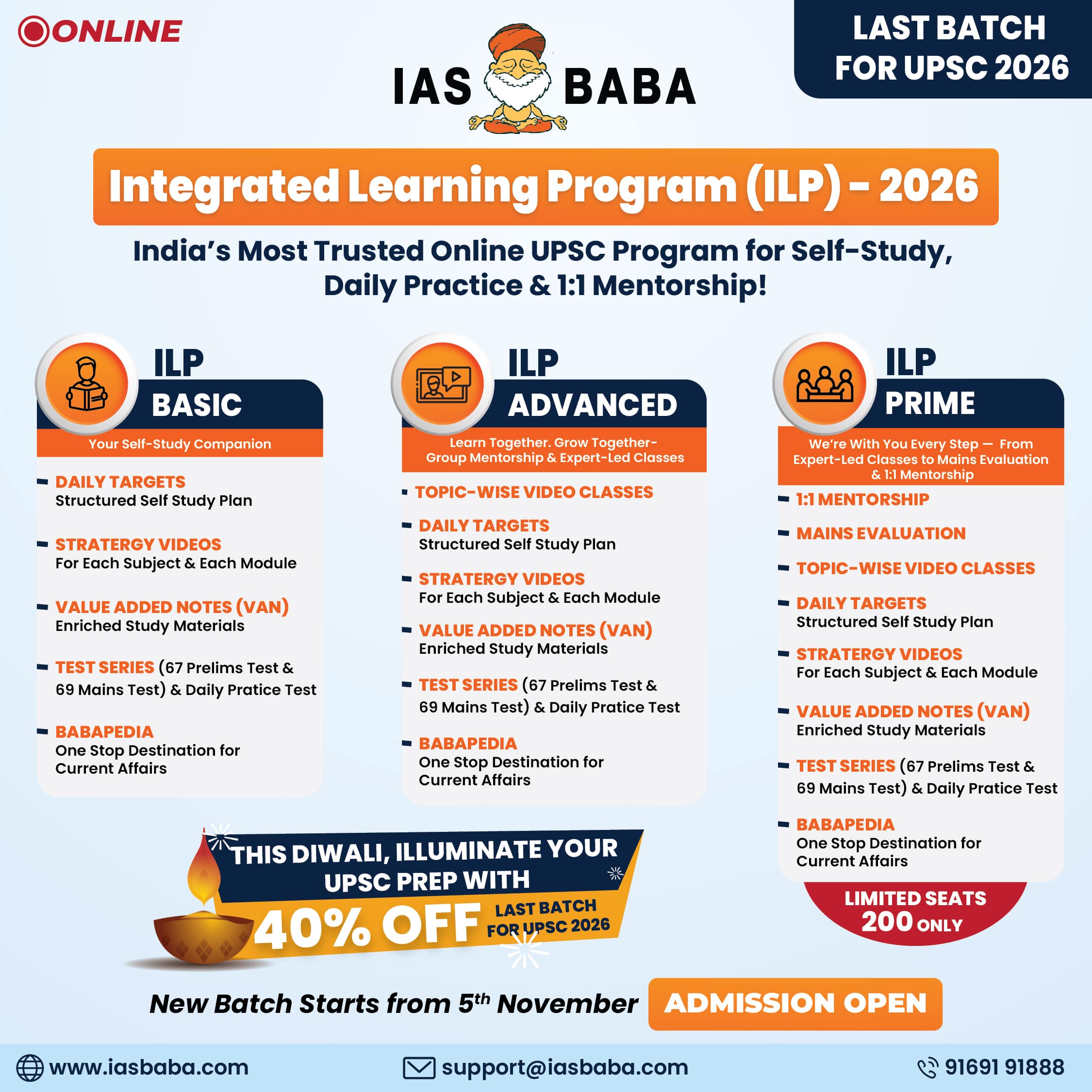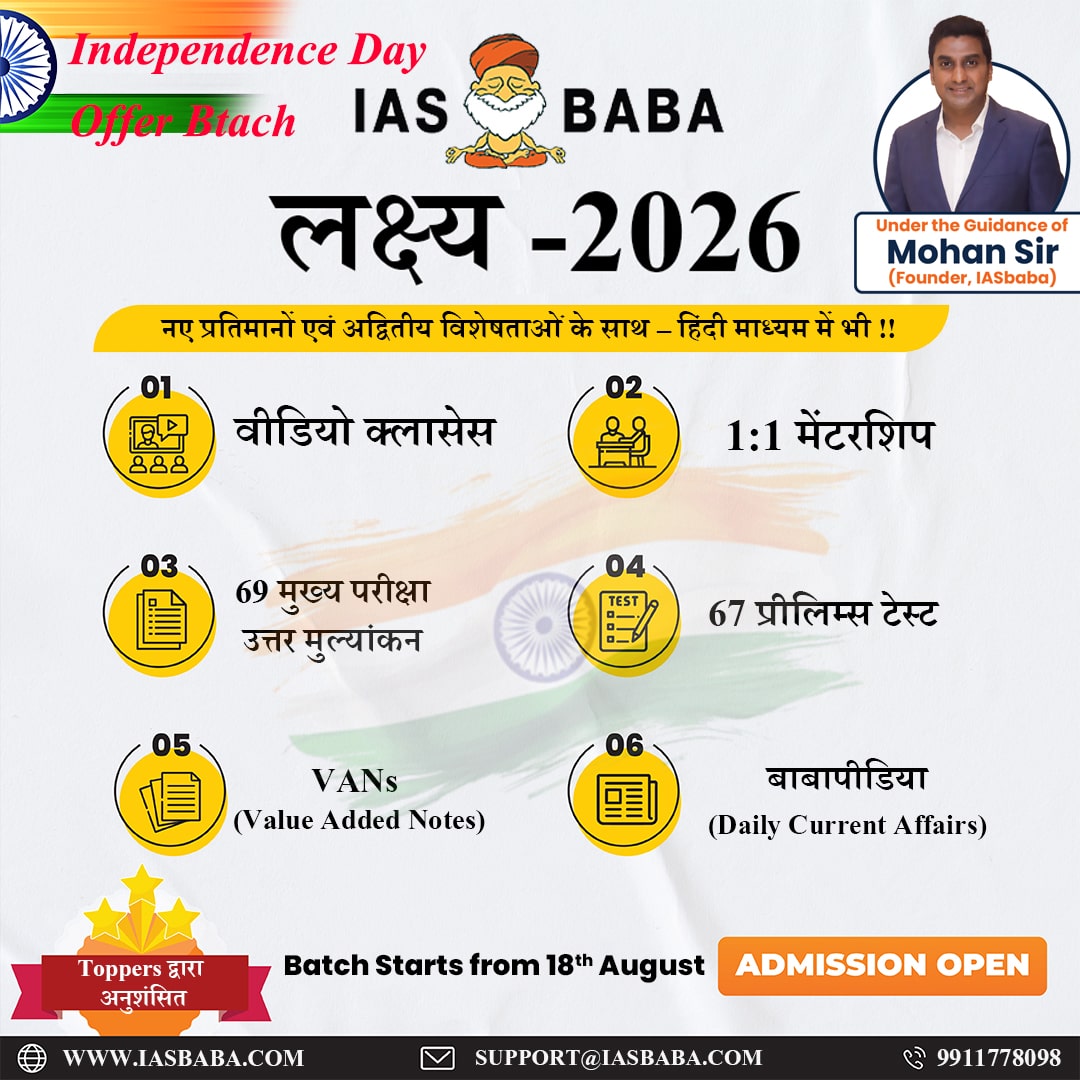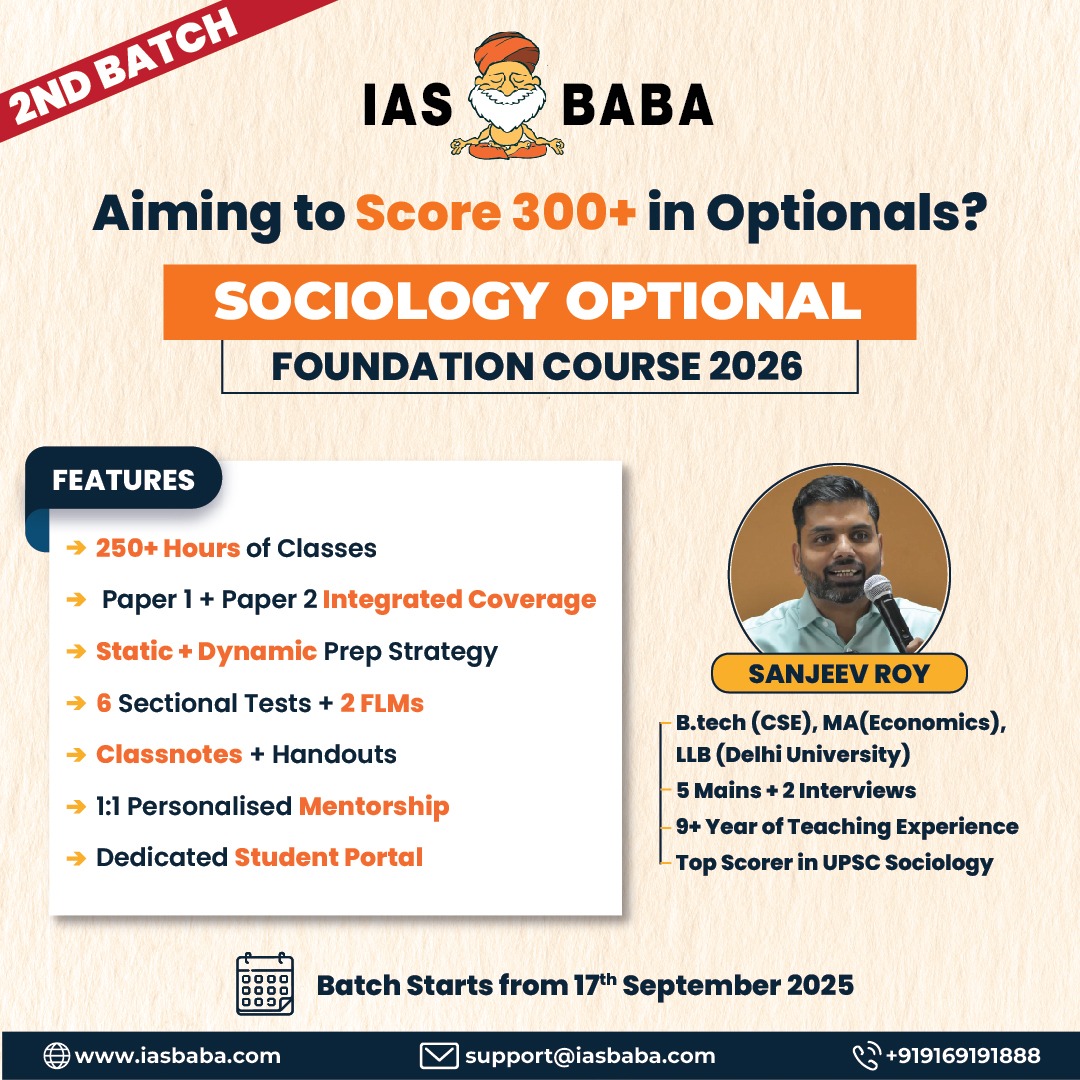IASbaba's Daily Current Affairs Analysis
Archives
(PRELIMS & MAINS Focus)
Category: GEOGRAPHY
Context: The India Meteorological Department (IMD) said that the Southwest Monsoon is set to make an early onset over the Andaman Sea.
Decoding the context: The normal date for the onset of monsoon over the South Andaman Sea is anytime after mid May with the normal date being May 19. By late May, the monsoon advances close to mainland India. IMD declares the monsoon onset over India when it hits Kerala, where the normal onset date is June 1.
Learning Corner:
- The Southwest Monsoon, also known as the summer monsoon, is a seasonal wind system that brings over 70% of India’s annual rainfall, critical for agriculture, water resources, and the economy.
- It originates due to differential heating between the Indian subcontinent and the Indian Ocean, driven by the Inter-Tropical Convergence Zone (ITCZ) shifting northward.
- Period: Typically spans June to September, accounting for 850 mm of India’s average 1,170 mm annual rainfall (IMD, 2024).
Mechanism and Progression
- Onset: The intense heating of the Indian subcontinent creates a low-pressure area, attracting moist winds from the southwest over the Indian Ocean, leading to the onset of the monsoon.
- Branches of the Southwest Monsoon:
- Arabian Sea Branch: Moves northward along the Western Ghats, causing heavy rainfall on the windward side.
- Bay of Bengal Branch: Travels towards the northeast, bringing precipitation to the northeastern states and the Indo-Gangetic plains.
- Andaman Sea Onset: Normal date is May 19; in 2025, the India Meteorological Department (IMD) predicts an early onset by May 12-14 due to a stronger cross-equatorial flow and cyclonic activity in the Bay of Bengal.
- Mainland Onset: Declared when the monsoon hits Kerala (normal date: June 1). IMD criteria include:
- Rainfall: At least 2.5 mm for two consecutive days in 14 stations in Kerala.
- Wind Patterns: Westerly winds up to 600 hPa level.
- Outgoing Longwave Radiation (OLR): Indicating cloud cover (OLR <200 W/m²).
- Advancement: By late May, the monsoon covers the Andaman and Nicobar Islands, advancing to Sri Lanka and South India. It reaches the northeast by mid-June and covers all of India by mid-July (normal date: July 15 for northwest India).
- Retreat: Begins in September from northwest India (Rajasthan), fully withdrawing by October 15, giving way to the Northeast Monsoon.
Source : Indian Express
Category: NATIONAL
Context: With the rising tensions between India and Pakistan following the Pahalgam terror attack, ‘Operation Sindoor’ is viewed as a major strike at deterring the terrorist infrastructure operating in Pakistan.
Decoding the context: India has executed multiple military operations in the past to achieve various objectives.
Learning Corner:
Operation Sindoor:
- India launched ‘Operation Sindoor’ on May 7th, hitting nine terror locations in Pakistan and Pakistan-occupied Kashmir (PoK).
- This marked the most expansive and widespread retaliation by India in recent years, since the Balakot airstrikes in 2019 and the surgical strikes following the Uri attack in 2016.
Operation Bandar:
- Codename for the Balakot airstrike conducted on February 26, 2019, in response to the Pulwama terror attack.
- Indian Air Force targeted a Jaish-e-Mohammed training camp in Balakot, Pakistan, marking the first airstrike across the IB since 1971.
Operation Vijay:
- Launched in May 1999 to evict Pakistani intruders from the Kargil sector in Jammu and Kashmir.
- The operation culminated in India’s victory, with the complete withdrawal of Pakistani forces by July 26, 1999.
Operation Safed Sagar:
- It was the codename for the Indian Air Force’s role in the 1999 Kargil War. It involved a series of airstrikes to flush out Pakistani troops from Indian positions in the Kargil sector along the Line of Control.
- This was the first large-scale use of air power in the region since the 1971 Indo-Pakistani War.
Operation Cactus:
- India’s intervention in the 1988 coup attempt in the Maldives was coded as Operation Cactus. With India’s military intervention, the Maldives was able to thwart the military coup.
Operation Pawan and Operation Poomalai:
- Operation Pawan was the codename given to the mission of the Indian Peace Keeping Force (IPKF) in Sri Lanka from 1987 to 1990.
- As part of the Indo-Sri Lankan Accord, the operation was launched to disarm the Liberation Tigers of Tamil Eelam (LTTE) and ensure peace and stability in Sri Lanka.
- India’s “parippu drop” or Operation Poomalai was launched by the Indian Air Force mission in 1987 to airdrop supplies to civilians trapped in Jaffna when Sri Lankan forces had laid siege to the peninsula.
Operation Jackpot and Operation Cactus Lily:
- Codenamed Operation Jackpot was launched during the Bangladesh Liberation War of 1971. It called for operational and logistics support, training, equipping, and tasking of Bengali deserters from the Pakistan Army, East Pakistan Rifles, Police, and civilian volunteers to take on the Pakistani forces within East Pakistan to ultimately liberate the land.
- Operation Cactus Lily, also known as the Meghna Heli Bridge or the Crossing of the Meghna, was an air assault operation conducted by the Indian Army and Indian Air Force to cross the Meghna River and reach Dhaka in December 1971 during the Bangladesh Liberation War.
Source : Indian Express
Category: GOVERNMENT SCHEMES
Context: The Cabinet Committee on Economic Affairs (CCEA) chaired by the Prime Minister Shri Narendra Modi, has accorded its approval for the Revised SHAKTI (Scheme for Harnessing and Allocating Koyala Transparently in India) Policy for Coal Allocation to Power Sector.
Decoding the context: The Revised SHAKTI Policy adds to the series of coal sector reforms being undertaken by the Government.
Learning Corner:
- The Scheme for Harnessing and Allocating Koyala Transparently in India (SHAKTI), introduced in 2017, aimed to overhaul coal allocation for the power sector by replacing the nomination-based regime with a transparent auction and tariff-based bidding system.
- Revised SHAKTI Policy simplifies the original eight categories of coal allocation into two windows, addressing operational inefficiencies and supporting growing energy demand while reducing reliance on imported coal.
Key Features of the Revised SHAKTI Policy
- Two-Window Allocation System:
- Window-I (Notified Price): Coal linkages are granted at notified prices to govt owned thermal power projects (TPPs), including joint ventures (JVs) and subsidiaries. States can utilize for their own generating companies or Independent Power Producers (IPPs) selected through Tariff-Based Competitive Bidding (TBCB) or existing IPPs with Power Purchase Agreements (PPAs).
- Window-II (Premium Basis): Open to all domestic coal-based power producers (with or without PPAs) and imported coal-based (ICB) plants. Coal is allocated through auctions for periods ranging from 12 months to 25 years at a premium above the notified price.
- Removal of Mandatory PPA Requirement: Under Window-II, the necessity for a PPA to secure coal has been eliminated, encouraging private investment in thermal power by allowing producers to sell electricity freely.
- Support for Capacity Expansion: Promotes both brownfield (expansion of existing plants) and greenfield (new plants) thermal power projects, especially at pithead sites (near coal sources) to reduce transportation costs and ease railway infrastructure strain.
Significance
- Energy Security: Aligns with India’s goal of reducing coal imports. ICB plants can now access domestic coal, reducing dependency on global markets.
- Economic Impact: Expected to catalyze economic activity by ensuring reliable and affordable power, potentially lowering tariffs (e.g., coal cost constitutes 60% of power tariffs, per CEA 2024).
- Employment Generation: New thermal projects, particularly at pithead sites, will create jobs in coal-rich states like Jharkhand, Odisha, and Chhattisgarh.
- Ease of Doing Business: Simplification from eight categories to two windows reduces bureaucratic hurdles, aligning with governance reforms.
- Revival of Stressed Assets: Provides coal linkages to stressed thermal power plants, aiding their revival and reducing non-performing assets in the banking sector.
Source : PIB
Category: GEOGRAPHY
Context: In a paper published in Scientific Reports, researchers estimate that gully erosion can potentially undermine efforts to realise nine of the 17 sustainable development goals (SDGs), specifically those related to zero hunger, clean water and sanitation and climate action.
Decoding the context: Gully erosion is arguably the most violent yet overlooked form of land degradation.
Learning Corner:
- Gully erosion is a severe form of soil erosion where concentrated water flow carves deep channels or gullies into the landscape, removing large amounts of soil and degrading land productivity.
- Unlike sheet or rill erosion, gully erosion creates permanent scars, often meters deep and wide, that are difficult to reclaim.
- A paper published in Scientific Reports highlights gully erosion’s threat to nine of the 17 Sustainable Development Goals (SDGs), including:
- SDG 2 (Zero Hunger): Loss of fertile farmland reduces food production.
- SDG 6 (Clean Water and Sanitation): Sedimentation pollutes water bodies, affecting quality and access.
- SDG 13 (Climate Action): Soil carbon loss exacerbates greenhouse gas emissions, undermining climate resilience.
Extent in India
- India loses 16.35 tonnes of soil per hectare annually to erosion (ICAR, 2023), with gully erosion prominent in:
- Chambal Valley (Madhya Pradesh, Rajasthan, Uttar Pradesh): Known as the “badlands,” with gullies up to 50 meters deep.
- Western Ghats: Heavy monsoon runoff on deforested slopes.
- Northeast India: Shifting cultivation (jhum) and steep terrain exacerbate gully formation (e.g., Meghalaya, Assam).
Environmental and Socio-Economic Impacts
- Agricultural Loss: Gullies fragment farmland, making it uncultivable. In Madhya Pradesh, 12% of farmland in the Chambal region was rendered unusable between 2015-2023 (ISRO SAC, 2024).
- Water Pollution: Sedimentation from gullies clogs rivers and reservoirs, reducing storage capacity (e.g., Gandhi Sagar Dam on Chambal lost 20% capacity since 1960).
- Infrastructure Damage: Gullies erode roads, bridges, and buildings. In 2024, gully erosion near NH-44 in Morena, MP, caused a 200-meter road collapse, disrupting connectivity.
- Livelihoods: Affects 60 million farmers, especially smallholders, leading to migration and poverty (SDG 1).
- Climate Impact: Soil erosion releases stored carbon—India’s degraded lands emit 50 million tonnes of CO2-equivalent annually (IPCC, 2024), undermining climate goals.
Government Initiatives
- National Mission for Sustainable Agriculture (NMSA): Promotes soil conservation through contour bunding and check dams, reclaiming 2 million hectares by 2024.
- Gully Control Measures: Techniques like gabion structures, vegetative barriers (e.g., vetiver grass), and terracing have been implemented in Chambal under the PM Krishi Sinchayee Yojana (PMSKY).
- Monitoring: ISRO’s Bhuvan portal maps gully erosion hotspots, aiding targeted interventions (e.g., 2024 Chambal mapping identified 500 new gullies).
Source : Down To Earth
Category: INTERNATIONAL
Context: The Pulitzer Prizes 2025 honored the best reporting from 2024 in 15 categories, as well as eight arts categories focused on books, music, and theater.
Decoding the context: While primarily American, the Pulitzer Prizes have international significance, often highlighting global issues through award-winning journalism.
Learning Corner:
- The Pulitzer Prizes, established in 1917 by the will of Joseph Pulitzer—a Hungarian-American newspaper publisher and pioneer of “yellow journalism”—are annual awards administered by Columbia University, New York City.
- They recognize excellence in American journalism, arts, letters, and music, honoring impactful storytelling, courageous reporting, and artistic innovation.
Structure and Categories
- Total Awards: 23 categories—15 in journalism (e.g., Public Service, Breaking News Reporting, Investigative Reporting), 7 in letters and drama (e.g., Fiction, History, Biography, Drama), and 1 in music.
- Awards: Pulitzer Prize winners typically receive $15,000 and a certificate. However, the winner in the Public Service category receives a gold medal instead of the cash prize and certificate. Special citations are occasionally awarded (e.g., Chuck Stone in 2025 for his Civil Rights Movement coverage and co-founding the National Association of Black Journalists).
Source : Hindustan Times
Practice MCQs
Q1. With reference to the Pulitzer Prizes, consider the following statements:
- The Pulitzer Prizes are awarded by the United Nations Educational, Scientific and Cultural Organization (UNESCO).
- The Public Service category is the only Pulitzer Prize that confers a gold medal.
- The prizes are awarded in journalism and literature categories.
- Audio reporting is a newly introduced category in the Pulitzer Prizes.
Which of the statements given above are correct?
A. 2 and 3 only
B. 1, 2 and 4 only
C. 2, 3 and 4 only
D. 1 and 4 only
Q2. With reference to gully erosion in India, consider the following statements:
- Gully erosion is more severe than sheet and rill erosion and results in the formation of deep, permanent channels in the landscape.
- The Chambal Valley region is highly affected by gully erosion.
- Gabion structures, vegetative barriers, and terracing are some of the techniques used to control gully erosion.
- India’s soil erosion rate is below the global average, indicating minimal land degradation risk.
Which of the statements given above is/are correct?
A. 1 and 2 only
B. 1, 2 and 3 only
C. 2 and 4 only
D. 1, 2, 3 and 4
Q3. With reference to the Revised SHAKTI Policy (2024), consider the following statements:
- Under Window-II, coal can be allocated to power plants without a Power Purchase Agreement (PPA).
- The policy promotes greenfield thermal power projects near coal sources to cut transport costs.
- Only government-owned power producers are eligible under both Window-I and Window-II.
- Coal linkages under Window-I are allocated through a premium-based auction system.
Which of the statements given above is/are correct?
A. 1 and 2 only
B. 3 and 4 only
C. 1, 2 and 3 only
D. 1, 2, 3 and 4
Comment the answers to the above questions in the comment section below!!
ANSWERS FOR ’ Today’s – Daily Practice MCQs’ will be updated along with tomorrow’s Daily Current Affairs
ANSWERS FOR 7th May – Daily Practice MCQs
Q.1) – a
Q.2) – b
Q.3) – c

